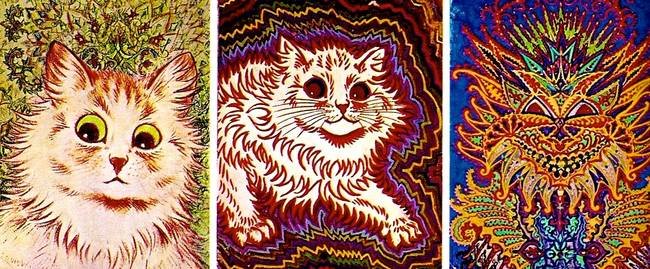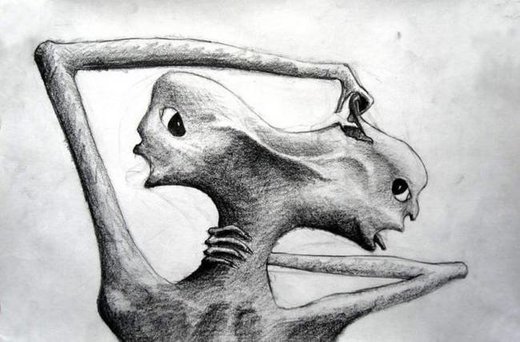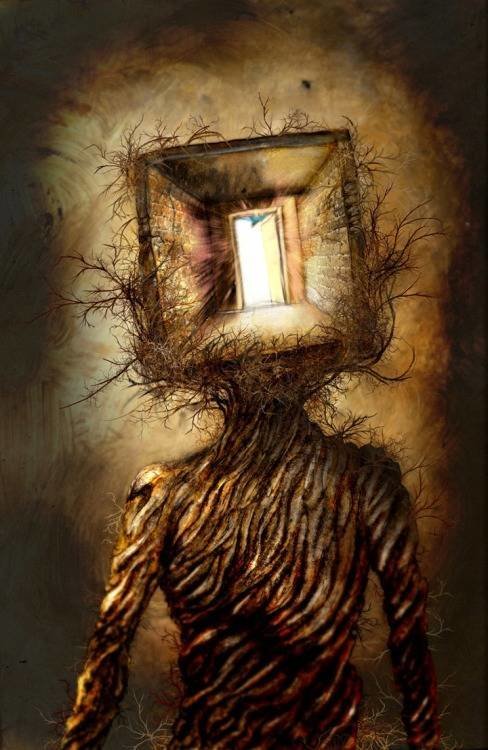
An NPR report tells us,
People with schizophrenia — more than 21 million worldwide — tend to have less gray matter and fewer connections in their brain than healthy peers. But scientists aren't sure why. The research, for the first time, suggests that variations in a gene called complement component 4, or C4, for short, could be important. The gene had previously been known to help the immune system target infections.What struck me about this story was the first sentence I quoted — that schizophrenics usually have "less gray matter and fewer connections in their brain" than other people. The new discovery suggests that a genetic malfunction causes the brain to clear away too many synaptic connections (a process called synaptic pruning).
A mutant form of the gene makes proteins that tag an excess number of brain synapses for destruction. This explanation meshes neatly with the tendency of schizophrenia to arise during adolescence, a period during which even healthy brains are busy pruning lots of connections.
The filter theory, popularized by Aldous Huxley, sees the brain as a kind of reducing valve for consciousness. There is a vast ocean of higher consciousness, and then there is the far more limited consciousness ordinarily available to us during our physical, earthly existence. The brain's function, according to this view, is not to originate consciousness but to funnel it to us in small, manageable quantities. A corollary of this claim is that less brain function should, at least in some cases, lead to more consciousness — even too much of it. With the brain-filter mechanism impaired, an unmanageable flood of consciousness can get through, overwhelming us.
Schizophrenia seems to be characterized by just this sense of being overwhelmed by a floodtide of thoughts and hyper-awareness. A schizophrenic is not someone with a "split personality," as popularly imagined. Instead, schizophrenics find themselves overreacting to stimuli and weaving complex connections between unrelated events. They experience, one might say, an excess of consciousness, taking the form of elaborate theorizing, arcane symbolism, complex ritualistic behaviors, and one or more sub-personalities that communicate with them, usually in the form of voices that only they can hear. The cartoon image of a schizophrenic wearing a tinfoil hat has roots in reality: some schizophrenics feel as if thoughts are being beamed into their skulls from an outside source, and try to shut out these unwanted thoughts any way they can.

All of this is broadly consistent with the idea that an unfiltered (or at least radically less filtered) consciousness is being downloaded into their brains, leading to feelings of confusion, helplessness, hypervigilance, and overstimulation, an inability to control their own thinking, and a frightening sense of being out of control.
Paranoia is often a feature of schizophrenia, precisely because schizophrenics feel that their thoughts originate outside of themselves, and because they perceive alarming patterns in innocuous details. Many schizophrenics assign religious meaning to the voices they hear and to the patterns they detect; they think they are in contact with gods or demons. A case can be made that, historically, the higher self has been interpreted as God (or gods) and demons by many mystics and religionists, and that this same misidentification occurs even in contemporary mystical experiences, such as NDEs. Julian Jaynes's book The Origin of Consciousness... includes many interesting quotes from unmedicated 19th century schizophrenics who interpreted their voices in blatantly religious terms. (This is not to suggest that I agree with Jaynes's overall theory. I don't.)
It's interesting to note that schizophrenia seems to involve fewer synaptic connections — yet, paradoxically, more mental connections. That is, the schizophrenic is constantly making spurious or fanciful mental connections between events. Why would this be, if synaptic connections are the necessary underpinning of mental connections?
Similarly, schizophrenics are not characterized by less mental activity, but by more mental activity — in fact, by far too much of it. Yet they have less gray matter. Again, this seems paradoxical. Why should a reduction in gray matter correlate with an explosion of thoughts?
On the basis of the filter model, these paradoxes disappear. The more synaptic connections there are, the tighter the sieve that filters consciousness down to manageable limits. The fewer synaptic connections, the looser the sieve and the less effective the filter — meaning that consciousness becomes unmanageable. The more gray matter there is, the better the filter that prevents thoughts from running amok. The less gray matter, the greater the likelihood that a surfeit of thoughts will spin out of control.
The close relationship between mysticism and madness (and between madness and artistic or scientific genius) has often been commented on.* Perhaps the same loosening of the brain-filter that can afford access to mystical insights, artistic inspiration, and scientific innovation can also, in less happy cases, let in such a tidal wave of consciousness that the victim is left drowning in it.
----
*For a famous instance of the tendency to link insanity with artistic inspiration (and romantic love), see A Midsummer Night's Dream, Act V, Sc. 1:
"Lovers and madmen have such seething brains,
Such shaping fantasies, that apprehend
More than cool reason ever comprehends.
The lunatic, the lover and the poet
Are of imagination all compact:
One sees more devils than vast hell can hold,
That is, the madman: the lover, all as frantic,
Sees Helen's beauty in a brow of Egypt:
The poet's eye, in fine frenzy rolling,
Doth glance from heaven to earth, from earth to heaven;
And as imagination bodies forth
The forms of things unknown, the poet's pen
Turns them to shapes and gives to airy nothing
A local habitation and a name."




Hit the nail on the head me thinks!